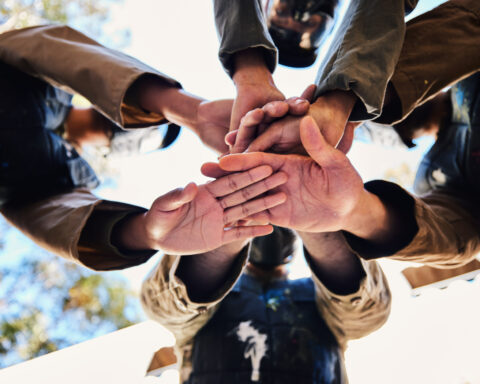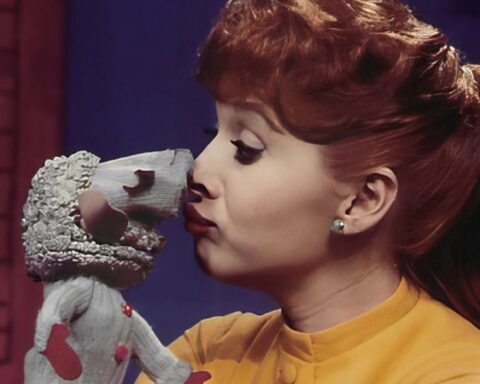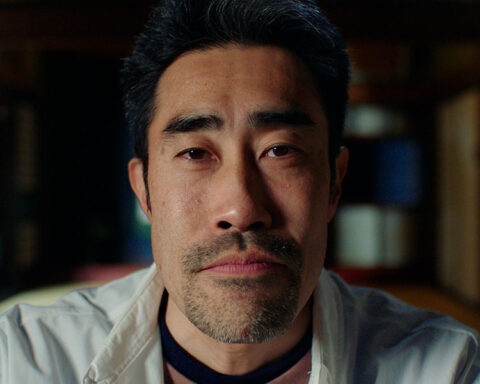Whatever you want to call it—reality TV, docu-series, docu-soap—unscripted television is being watched by more people around the globe than ever. And until something more popular comes along, its prominence will persist.
With this popularity has come a new breed of storytellers, who pull from the exact same bag of tricks as documentary filmmakers—capturing everything as it happens and editing it into a compelling story.
And yet a resistance to reality television prevails: it’s not serious craft; it’s driven by speed and cost considerations; it’s crass.
It is not real.
Whether you consider the concept of _Top Chef_ or _Wife Swap_ to be modern Molière or a quick cash-in, the reality is that top-rated shows, just like the best documentaries, the best journalism—anything that traffics in real-life documentation—doesn’t cut it if it’s not real.
Oh, really? you might ask.
How is it possible for a competitor on _Survivor_ to starve when there’s a junk-food-laden craft services table just outside the camera’s view?
The ways to manipulate reality shows and people are myriad, and certainly some shows do it to various levels. But the best moments found on reality TV are unscriptable or beyond the grasp of most writers. _Survivor_, that “post-9/11 metaphor for apocalyptic aftermath” (_The Atlantic_), hasn’t lasted 12 years in 40 countries by faking it. Anyone can find detailed accounts of intense lock-down measures the show’s producers take to keep contestants secluded from crew during filming.
Even the soapy _Real Housewives of Vancouver_ can’t handle more than what’s really happening, and its producers let the chips fall where they may. “These people are not actors,” says Erin Haskett, executive producer at Vancouver’s “Lark Productions”:http://www.larkproductions.ca/, which just completed the first season of the Canadian version of the glossy U.S. franchise.
“If we asked them to do something that wasn’t true to who they are, or true to their real story, there’s no way they could do it. It’s not authentic to their world.”
The fast-talking Haskett, along with Lark’s head of production, Andrew Williamson, are tucked into a booth at the trendy Save-On Meats café—itself the location of another reality show Lark just pulled off, the risky-new-eatery-on-skid-row venture _Gastown Gamble_. The dynamic duo is here to divulge methods behind the madness of producing reality TV—or ‘docu-series,’ as the former documentary makers prefer.
“Where we occasionally take liberties,” Haskett says, “is by putting the characters in situations that they wouldn’t normally be in. The housewives wouldn’t hang out every Friday, but in order for us to make a shooting schedule, we ask, ‘Would you get together on Friday night?’”
While documenting the opening of Save-On-Meats in the poverty-and-drug-stricken Gastown neighbourhood, sheer force of events was enough to keep the plot rolling. But as complications piled up, sometimes the reality required clarification checks, and subjects were asked on the fly to explain things for the camera.
“That’s always our challenge,” says Williamson. “Setting up context. That’s when we would ask the owners, ‘Can you guys have a conversation on camera about why this is important to you?’”
But even these scene set-ups can come off as live action. During lunch, the beautiful co-owner of Save-On-Meats, Nico Brand, warmly greets the producers. Brand recalls how she became oblivious to the camera almost immediately during the 10-hour-a-day, five-days-a-week, four-month shoot. “I had such a tunnel vision: it was so terrifying opening the business,” says Brand. “We were running as fast as we could and having the cameras was sometimes a physical impediment at worst. You just forgot. And then suddenly they’d ask you a question and it’d be like, oh, someone wants to hear me rant! Nobody else does! So you’d just vent at them and then run away again. It was kind of cathartic that way. But honestly, we just didn’t pay them any attention. We were just too busy.”
In fact, _Gastown Gamble_ was originally conceived as a documentary. Its evolution as a reality television show is telling, not only of the similar skills involved in the creation of both forms, but of the substantial and growing market for unscripted programs.
When the plan to turn the old Save-On-Meats butcher shop into a hipster hangout first came to the attention of Lark Productions’ founder and president Louise Clark, she immediately thought: “Great documentary!”
A former top producer at NFB and CTV, Clark had just launched Lark and this would be her first original project (_The Real Housewives of Vancouver_, the company’s debut, is a U.S.-owned franchise). As she embarked on the long road to documentary financing, Clark also invested in a sizzle—reality-TV lingo for ‘trailer’—to shop it as a series. Buyers at OWN Canada loved the sizzle’s zippy approach and snapped up eight episodes.
With the proliferation of channels in Canada that need to be fed a steady stream of content (Food Network, Discovery, OWN, Cosmo TV, W Network, HGTV, Showcase, History Channel, etc.), more Vancouver producers than ever are placing their bets on docu-series. Production of reality shows in Vancouver has more than doubled in three years, according to B.C. Film Commission statistics, with 35 docu-series produced in 2011, compared to 15 in 2008. (During the same period, documentaries declined by more than one-third.)
“The marketplace is calling the shots,” concedes David Paperny, co-owner of “Paperny Entertainment”:http://www.papernyfilms.com/, whose docu-series include _Eat St._, _100 Mile Challenge_, _Consumed_, _The World’s Weirdest Restaurants_ and _The Week the Women Went_, among others. “From the perspective of running a production company, it makes more sense to make a factual series than a one-off documentary,” Paperny says somewhat reluctantly. His 18-year-old company has produced dozens of television documentaries, including the 1994 Academy Award–nominated _Broadcast Tapes of Dr. Peter_. “It takes as much time to develop a one-off documentary as it does to develop a reality series, which can extend over 13 shows and can even be renewed for multiple seasons,” he says, adding that costs are amortized for series production, and the concept of the series can be licensed to other markets.
Paperny currently employs a couple hundred contract workers, with 20 full-time staff. This year marks the first year in the company’s history that no documentaries will be produced.
For documentary makers willing to cross the line, “there’s tons of work in town,” David Gullason, producer of Omni Film’s _Ice Pilots NWT_ and _Pyros_, recently told Vancouver’s Province. And _BCBusiness_ magazine’s March cover story delves into the growth of unscripted production and ways it has opened doors in the labour force. “The global market is looking more at Canada than they ever have,” says John Ritchie, a co-owner of “Force Four”:http://www.forcefour.com/ (_Cupcake Girls, Family Cook Off, Urban/Suburban, Murder She Solved, Million Dollar Neighbourhood_). “We are currently busier than we’ve been in 25 years,” Ritchie says, adding that his staff has swelled from 20 to 50 in recent years.
Back at Save-on-Meats, Haskett and Williamson have finished lunch and are exploring the four-storey space where they practically lived for four months during last summer’s shoot. Here’s where they stashed film equipment; it’s now the staff room. The kitchen crew barely notices when they walk by, line chefs and dishwashers still so used to their presence.
“Our strategy was to be here before it opened and after it closed, every day,” says Williamson, whose field team included six people with two cameras. “That’s how we captured all the good drama you see in the series: being here with our ears open, our cameras on and logging time. There was lots of ‘We need you here now!’ And the guys would run upstairs and get a great moment.”
Developing a level of trust and intimacy with subjects so that they give you those moments is key. “You need a real facility with your subject,” says Haskett. “You’re not making requests to go to meet every few weeks, as you’d do with a doc. You’re there every day from the minute they get to work. That takes a special skill of trying to get along, getting access to the stories, while respecting boundaries and personalities. It’s a lot to ask. And then when you see a big moment, a personal unfolding of some sort, you need to pick up that story element,” she adds. “You must make sure you can set it up and finish it off.”
Telling eight compelling stories for the series was sometimes a puzzle. “When you’re on the ground,” says Williamson, “you need to spot stories in the moment that could play in episode seven, even though you might be shooting storylines for episode three. You’re constantly aware of where you might pick-up a storyline.”
As series producer for _Gastown Gamble_, Williamson’s role included not only directing the filming crew, but also the team of editors and story producers spinning Avid magic at editing suites back at Lark’s studio.
Anyone who has shaped a story from pre-filmed material knows it’s a specialized skill, requiring considerable imagination and innovation. Reality certainly does not write itself. Hundreds of hours of footage are shot to make a single program of reality television, and the finished edit must summon a narrative vibrancy that is not dissimilar to scripted stories. There is a beginning and ending, there is character, transformation and resolution. As Louise Clark puts it: “Let’s face it, it could be _The Sopranos_ or _Queer Eye for the Straight Guy_ — you are hitting the same buttons in terms of an audience’s attention.”
As the footage comes in, teams of people log, transcribe and create stringers, loose assembles based around character or events, which story producers carve into episodes. For _Gastown Gamble_, the footage rolled in from two cameras, but _Real Housewives of Vancouver_ required three crews and six cameras: Eight story producers worked simultaneously to shape the arc of every program.
“Although reality shows might look simplistic or superficial,” Paperny will tell you, “there’s tremendous complexity in structure to consider, in formula, in narrative, how to get the material in the field, and how to tell ongoing stories in a series that makes sense, that has a branding from episode to episode, but that doesn’t become boring.”
The editing turn-around is much faster than a documentary. “We could spend four to six months editing a one-hour doc,” says Paperny, “and we could also spend six months editing a 13-hour series. The time frame is tighter and there’s usually more material. So the challenges are enormous.”
Considering the demanding shooting schedule—you don’t want to miss a thing—and the grueling turnaround, it’s a wonder reality show producers have a life. Paperny only chuckles. “When I make these big-budget series, I have a lot of people working for me, hundreds. Assuming that I hire well, and my team is working well, it’s fun and exciting. We had a gas making _The Week the Women Went_.”
The key to keeping shooting and story crews organized is the daily story meeting. “It’s one thing to be on the ground shooting and responding to the action,” says Williamson. “But sometimes it doesn’t translate; sometimes it’s weaker, and sometimes the action is better when you’re watching the footage.” Story meetings determine ways the episode will take shape and how it will lead into and complement future episodes. It’s also when story producers tell Williamson what he’s missed, whether more set up on the field is needed to explain a storyline.
And then, of course, as soon as a plan’s been set, the characters unravel it, and pull off something completely unexpected. Following the five housewives provided near constant astoundment, Clark says. “Were we surprised? We were surprised often. We were taken for a ride for sure. It was like grabbing a tiger by the tail keeping up with what was going on.”
But Haskett says “that’s the best part.” You can’t make this stuff up. “You’re documenting a journey,” she explains. “And that was the revelation for me,” coming from the doc side: “It’s the exact same skill set, that exact same storytelling. Finding the best, truest, most dramatic moment in a story and sharing it.”
With some of the most astute television critics claiming that reality TV is the liveliest genre on the set right now, engaging potent cultural issues like sex, class and race in ways that traditional television can’t touch—perhaps it’s time to overcome the resistance to the genre, or as Paperny likes to say, “we have to embrace change.”











